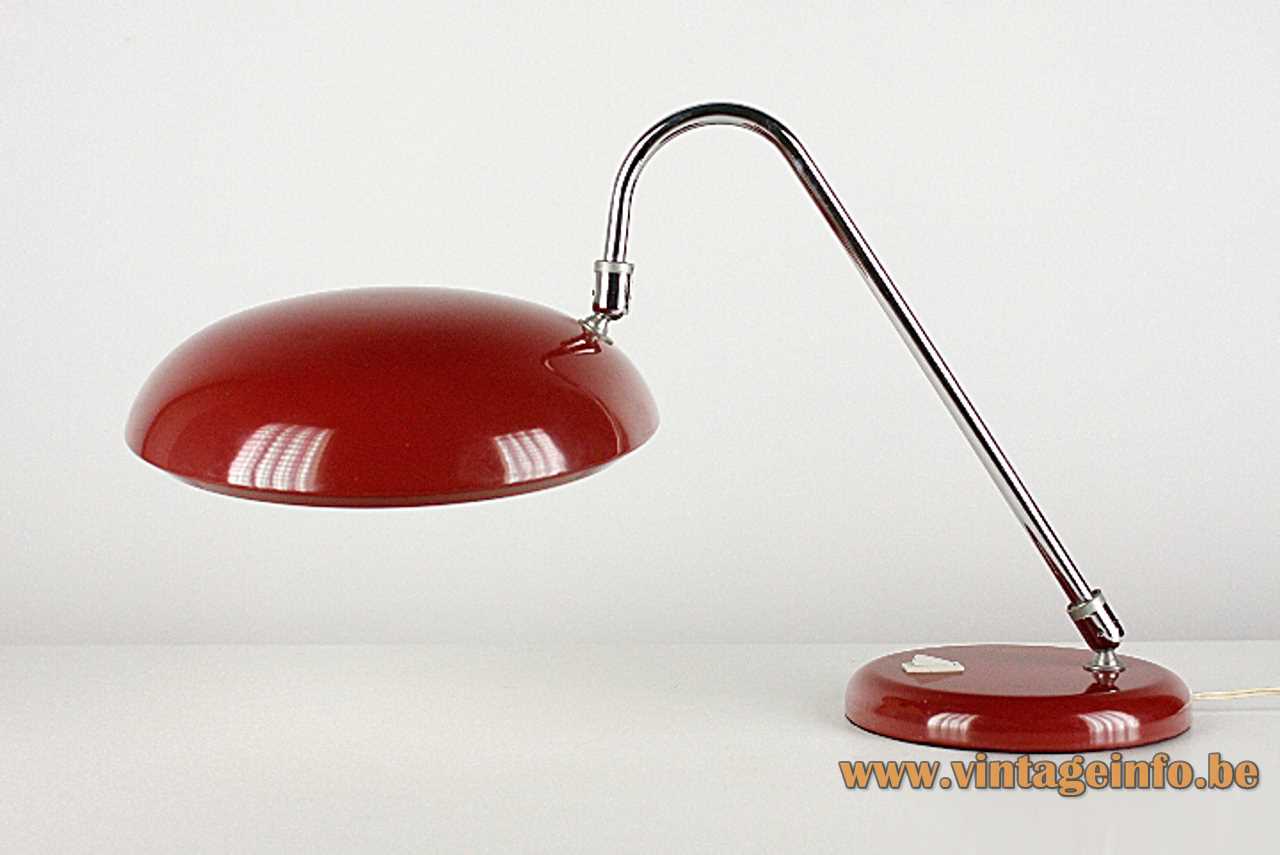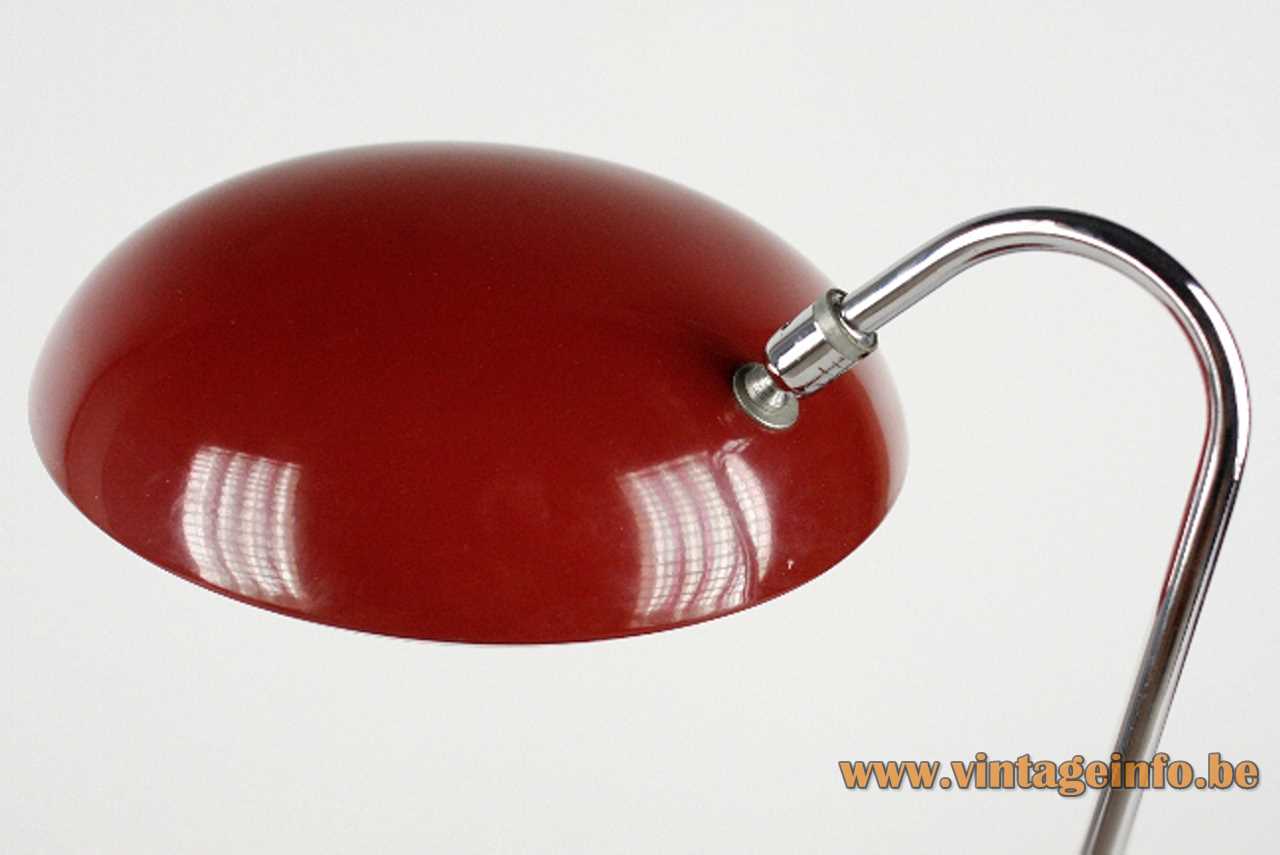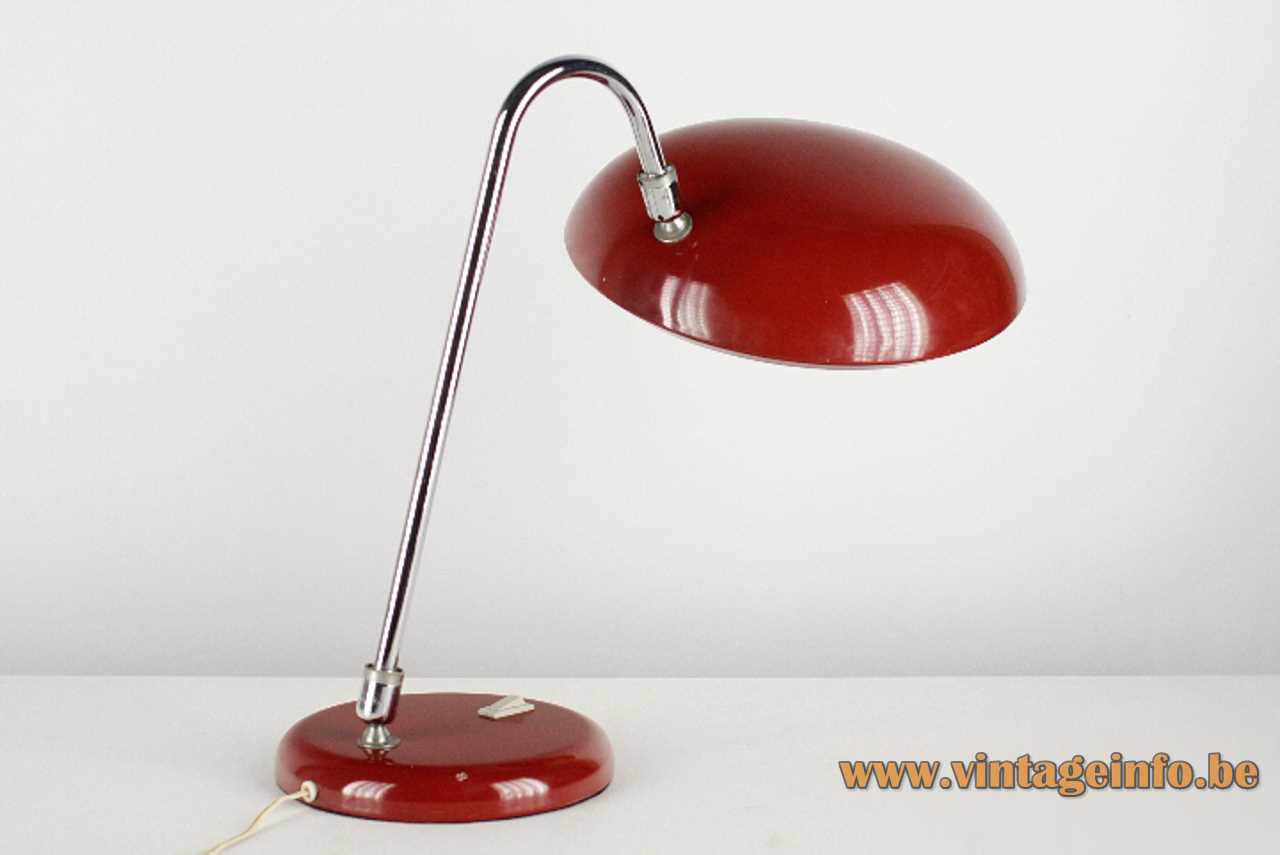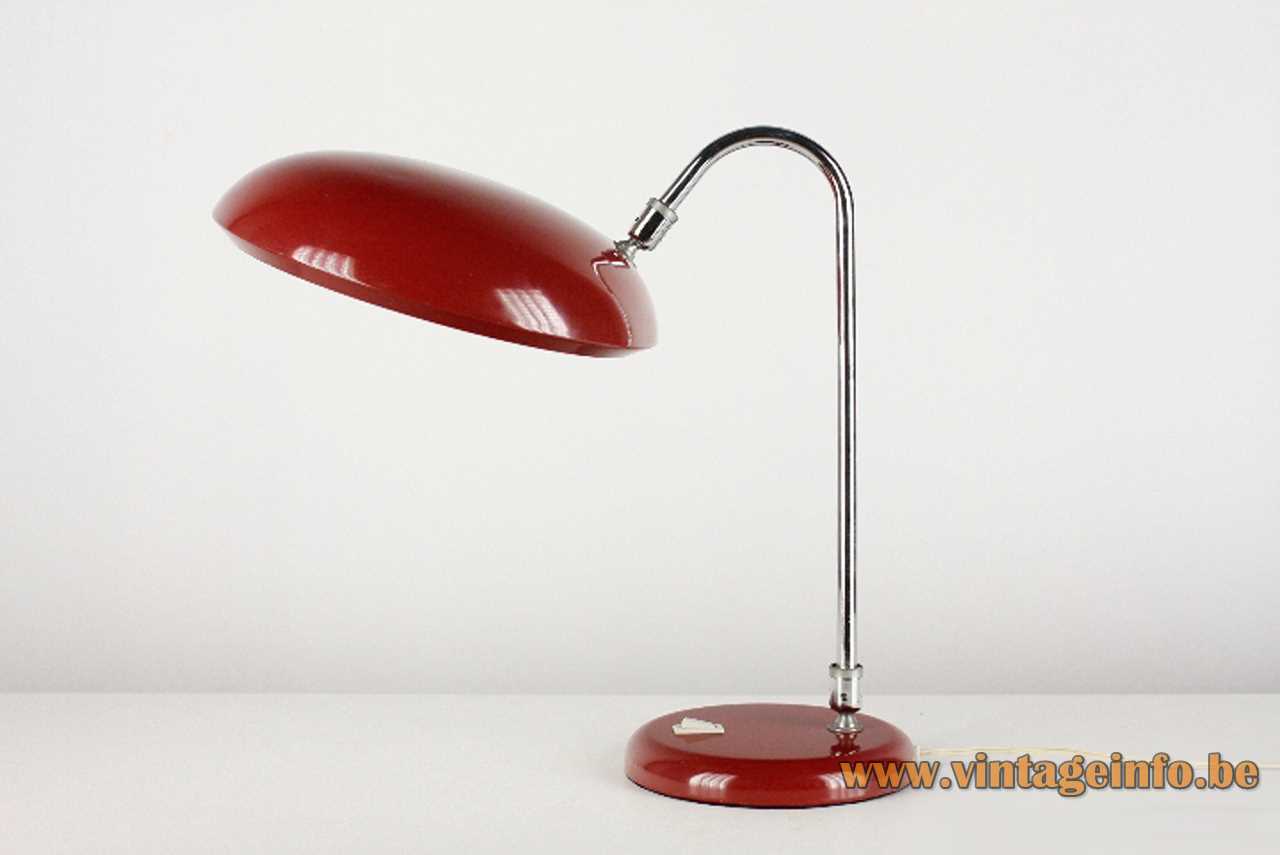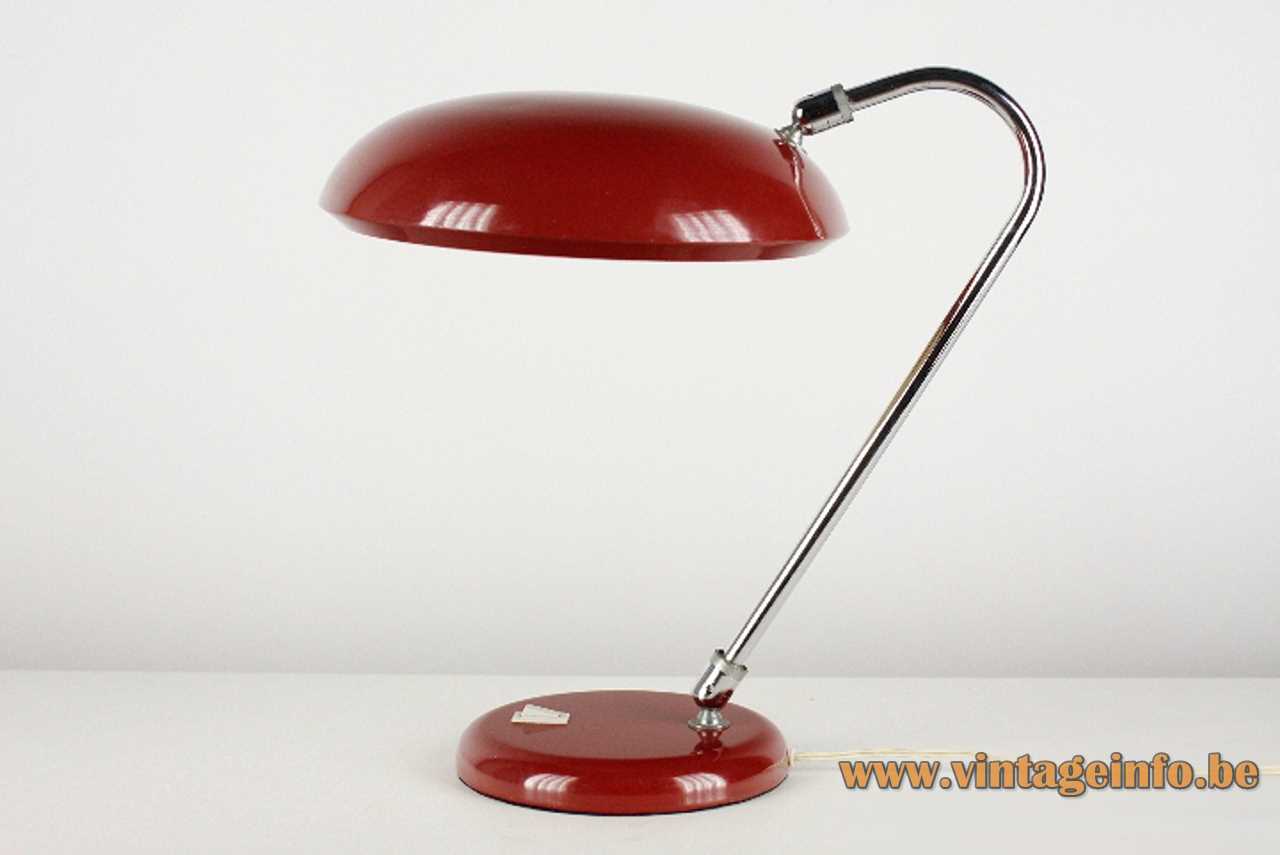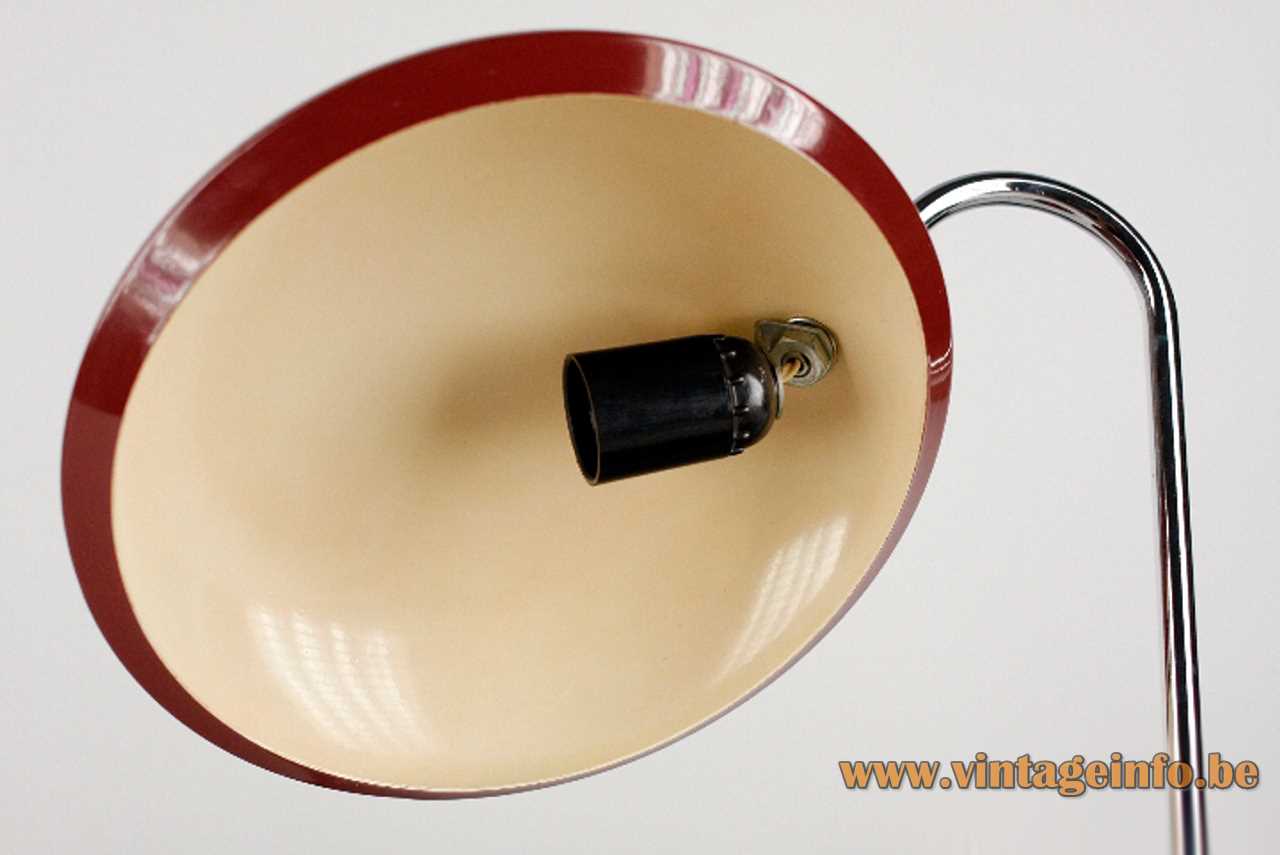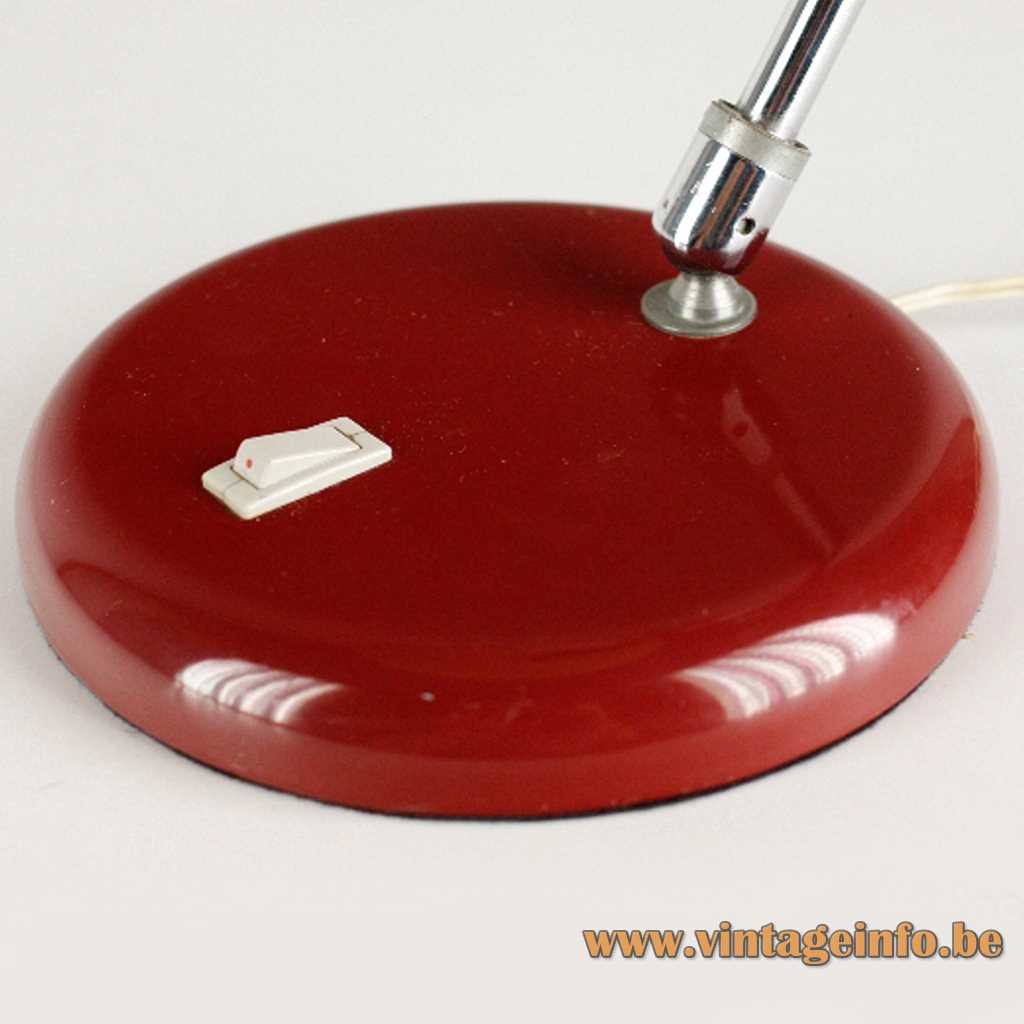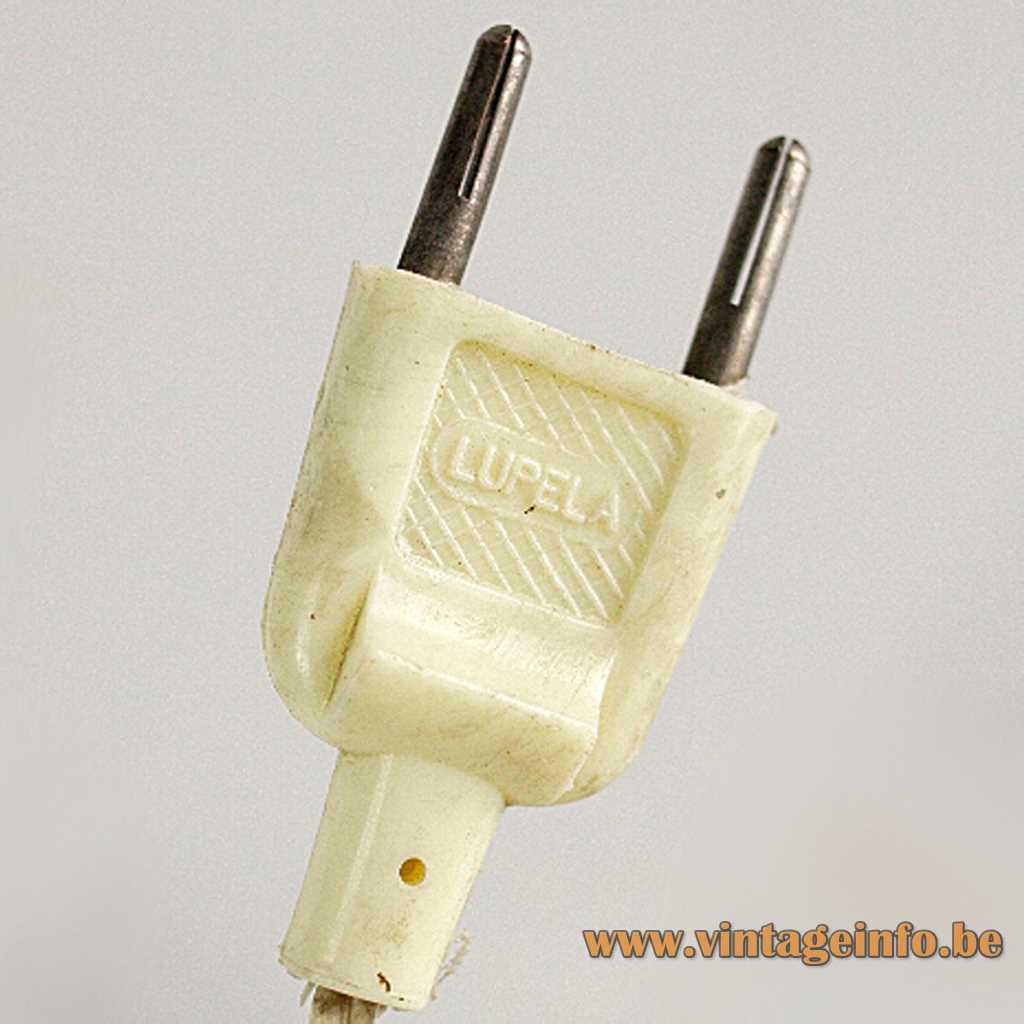Links (external links open in a new window)
Guardia Civil – Civil Guard – Wikipedia
Vintageinfo
Fase lamps
Lupela Desk Lamp Cisne
Materials: Round red painted metal (iron) base. Counterweight inside the base. Built-in white rectangular switch. Curved chromed metal (iron) swan neck rod. Chrome joints and parts. Red painted aluminium mushroom lampshade, painted white inside. Bakelite E27 socket.
Height: 50 cm / 19.68”
Lampshade: 26 cm / 10.23”
Base: 17 cm / 6.69”
Electricity: 1 bulb E27, 1 x 60 watt maximum, 110/220 volt.
Any type of light bulb can be used, not a specific one preferred.
Period: 1970s – Mid-Century Modern.
Designer: Luis Pérez de la Oliva.
Manufacturer: Lupela, Madrid, Spain.
Other versions: This Lupela desk lamp Cisne exists in several colours. The older version of this lamp has a round switch. Cisne is Spanish for swan.
Lupela
The Lupela story start with the Fase company. Fase was founded by self-made man Pedro Martin and designer Luis Pérez de la Oliva in 1964, some sources say 1966. The Boomerang lamp was one of their first designs. Initially they sold their self-produced lamps to the markets in and around the capital Madrid before successfully opening a factory in Torrejón de Ardoz on the outskirts of the city.
They produced mainly lamps, but also ashtrays and other products such as office bins and coat racks.
Fase supplied many lamps to the offices of General Franco‘s dictatorial government and the Guardia Civil, some sort of military police. From 1975 on, after the death of Franco and the end of the regime, Fase started with Italian Modern and Bauhaus-inspired designs. The Spaniards were unfamiliar with this design because of the Franco regime that ruled the country with an iron fist and allowed few foreign influences.
During the 70s Fase exported lamps to Belgium, The Netherlands, Luxembourg, Great Britain, Norway, France, Italy, Germany, Portugal, United Arab Emirates, Japan, Hong Kong, Morocco, the United States and Canada. In total in more than 32 countries.
1980s
In the 1980s Fase jumped on the bandwagon of the halogen lighting. The break with tradition proved unsuccessful and ultimately contributed to the end of the business. A large fine of the Treasury in the early nineties for tax irregularities was the end for Fase. The company was officially dissolved in 1996.
Drowned, the company sold its manufacturing license to a German brand, Ma-Of, which slightly modified the original design by adding more chrome. Before these final death rattles, the partners had already separated.
Lupela
Luis Pérez de la Oliva had created his own brand Lupela, another flagship of Spanish design, named after himself: Luis Pérez de la Oliva. Lupela went back to the old successful designs of Fase. Many lamps produced by Lupela are very similar with the Fase lamps from the 60s and 70s, such as the Boomerang and President lamps. Luis Pérez de la Oliva designed all these lamps, as he did before for Fase. What happened with the Lupela company is unclear. Probably everyone was bored with the old design and the company died a glorious death sometime in the 80s. No information can be found about it, unfortunately.
GEI (Gabinete Estudios Industriales – Cabinet Industrial Studies) and Ma-of were 2 other Spanish companies that sold similar lamps. Also Massive from Belgium produced a few lamps in this style.
Designers
Designers who have worked for the Fase company include: Gabriel Teixidó. He designed the Iberia and Meca series and Tomás Díaz Magro, responsible for the Apolo, Minifase and Impala lamps. The most productive was Luis Pérez de la Oliva, who designed the majority of the Fase lamps and the lamps for Lupela.
Many thanks to Lluís from Eclectique Vintage for the photos and the enthusiasm.
